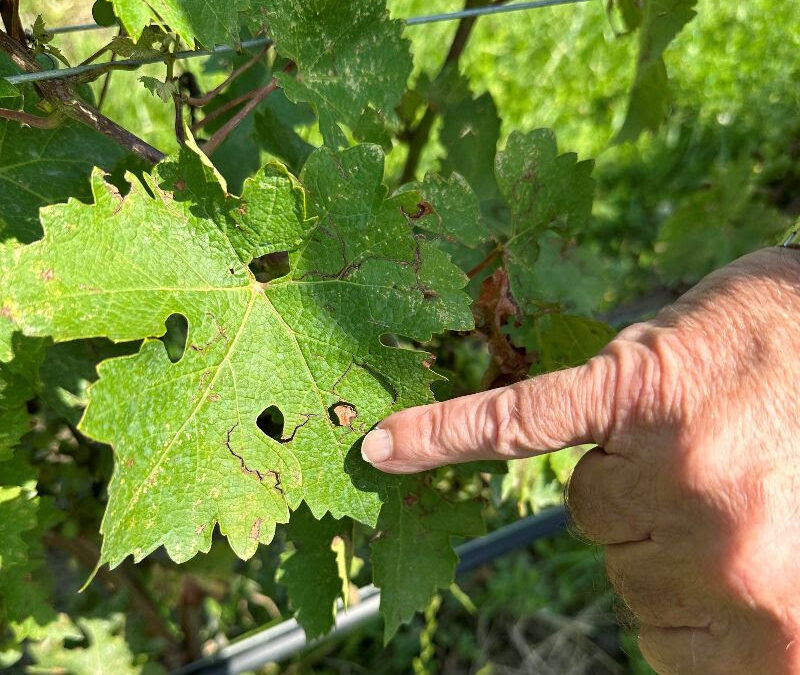* Photo shows hail damage from the end of July, beginning of August – you can see the little hole punched through the leaf. Unfortunately, the hail sliced up the grapes too. It’s looking like 20% of the vineyard is affected. A short video explaining more is available here.
It seems that this summer has brought one rainstorm after another. It’s been a pattern of heavy rain, light rain, and drizzle, interrupted by the odd spot of hail then a bit of sun. I look back to my youth, when summers at the cottage were a never-ending succession of bright days with thunderstorms at night. Probably I am looking back with rose-coloured glasses.
Here at Southbrook, each year is different, producing its own challenges. Some years, it’s too hot, some too cold. Some are too dry, and some too wet. There are ways to mitigate those risks. When the temperatures dip too low, we can utilize the fans to bring warmer air down to the ground. When it gets too dry, we can turn on our drip irrigation. When it rains too much, our soil is drained using the 75 kilometres of drainage tiles installed under the rows.
It’s humidity that presents one of our biggest challenges. When the the canopy (leaves, grapes and shoots) doesn’t dry quickly after a rainfall, mildew and rot can form and damage the crop. We love the rain (not the hail) but we need a few days of sunshine to dry everything out. August has not cooperated so far.
What can a grape grower do? The easy solution is to spray fungicides to control infection. There are a wide array available, from systemic (absorbed into the plant) to contact spray (working only on the surface). They do a fairly good job, but you have to use them carefully as the fungus can develop immunity to each class of product, and, of course, most of these chemical fungicides are incredibly toxic to the other life in the vineyard including the people that are applying them.
I want to work in a different way. While we can use some natural chemicals, we need to focus more on viticultural practice. Things like keeping the canopy light so the wind can dry the leaves, and herbal teas that help toughen the leaves and the grapeskins. One of the more exciting and promising techniques is the use of bacteria. Sounds odd, but spraying bacteria, like bacillus subtillus, on the vines not only works to improve the uptake of potassium (an important element for plant health), but also stops powdery mildew in its tracks.
These are some of the things we do to make sure your glass of wine tastes lively and bright, is free of any chemical residue, and absolutely delicious.

